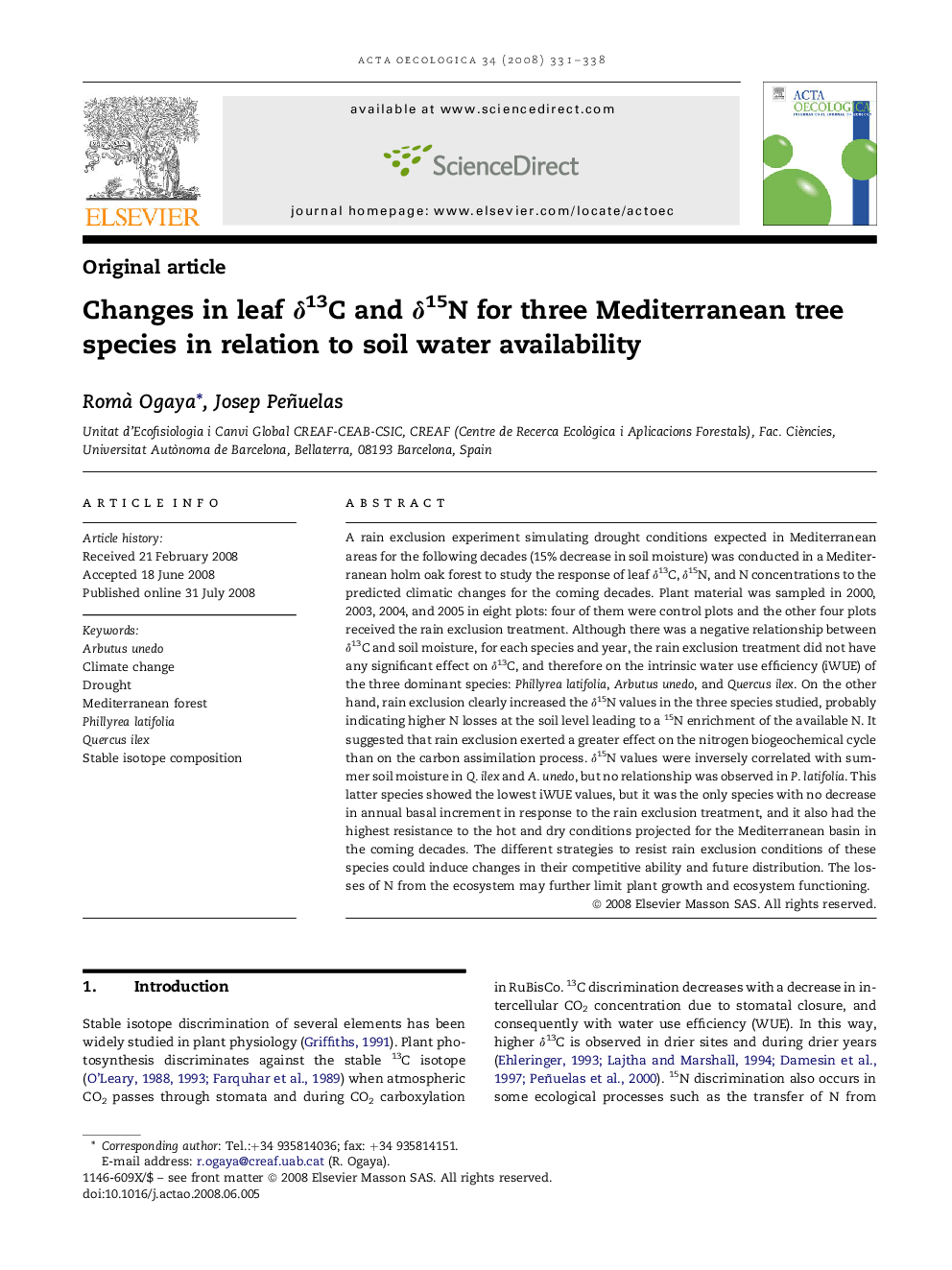| Article ID | Journal | Published Year | Pages | File Type |
|---|---|---|---|---|
| 4381490 | Acta Oecologica | 2008 | 8 Pages |
Abstract
A rain exclusion experiment simulating drought conditions expected in Mediterranean areas for the following decades (15% decrease in soil moisture) was conducted in a Mediterranean holm oak forest to study the response of leaf δ13C, δ15N, and N concentrations to the predicted climatic changes for the coming decades. Plant material was sampled in 2000, 2003, 2004, and 2005 in eight plots: four of them were control plots and the other four plots received the rain exclusion treatment. Although there was a negative relationship between δ13C and soil moisture, for each species and year, the rain exclusion treatment did not have any significant effect on δ13C, and therefore on the intrinsic water use efficiency (iWUE) of the three dominant species: Phillyrea latifolia, Arbutus unedo, and Quercus ilex. On the other hand, rain exclusion clearly increased the δ15N values in the three species studied, probably indicating higher N losses at the soil level leading to a 15N enrichment of the available N. It suggested that rain exclusion exerted a greater effect on the nitrogen biogeochemical cycle than on the carbon assimilation process. δ15N values were inversely correlated with summer soil moisture in Q. ilex and A. unedo, but no relationship was observed in P. latifolia. This latter species showed the lowest iWUE values, but it was the only species with no decrease in annual basal increment in response to the rain exclusion treatment, and it also had the highest resistance to the hot and dry conditions projected for the Mediterranean basin in the coming decades. The different strategies to resist rain exclusion conditions of these species could induce changes in their competitive ability and future distribution. The losses of N from the ecosystem may further limit plant growth and ecosystem functioning.
Keywords
Related Topics
Life Sciences
Agricultural and Biological Sciences
Ecology, Evolution, Behavior and Systematics
Authors
Romà Ogaya, Josep Peñuelas,
